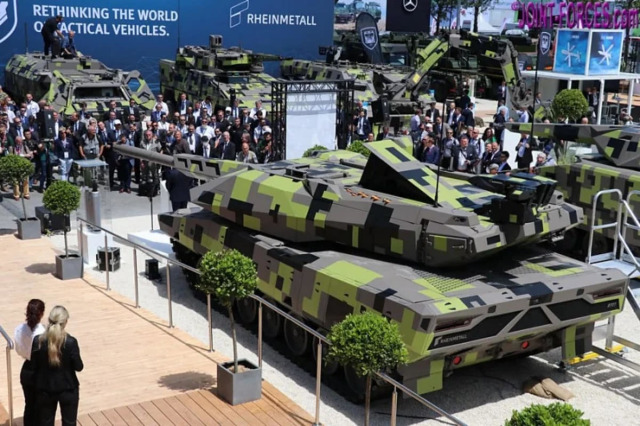Main battle tanks (MBT) have been around for a little over 100 years, and during this period they have been continuously developing, improving firepower, survivability and mobility. Despite the fact that several new models have appeared from a "blank slate", in many countries there is a tendency to modernize existing armored platforms, rather than develop or buy new ones.
Promising main battle tanks of Europe
The most significant new-design MBT program in Europe is the Franco-German Main Ground Combat System (MGCS) program, which is due to enter service around 2035 and is expected to replace the currently deployed Leopard-2 and Leclerc MBT families from Krauss-Maffei. Wegmann (KMW) and Nexter, respectively.
In the past, a number of European countries had the opportunity to design and produce main battle tanks, for example, Sweden with Stridsvagn 103 (commonly known as S-tank) and Switzerland with Panzer 61 and Panzer 68 tanks. However, over time, such production declined as European armies consolidated their purchases around just a few projects. In this regard, both Sweden and Switzerland opted for the German Leopard 2 in its modified version in accordance with their own requirements.
Nevertheless, the Eurosatory 2022 weapons exhibition, which showed two noteworthy samples, allowed us to look into a potential future European MBT project. The first is an advanced demonstrator of the European Main Battle Tank (EOBT), developed by KNDS as part of KMW and Nexter. The second is the KF51 "Panther" OBT, developed by the German concern Rheinmetall.
The EOBT features a heavily modified Leopard 2 hull equipped with a new two-seat turret armed with a 120 mm Nexter F1 CN120-26 L/52 smoothbore cannon. The gun is equipped with an automatic loader and is compatible with the upcoming Nexter SHARD armor-piercing projectile with a stabilized tail and a discarded pallet (APFSDS). The ammunition (used) is 22 shells. Although the main armament presented was the same as that of the Leclerc MBT, it is expected that a larger 140 mm ASCALON cannon developed by Nexter will be installed in the final KNDS proposal under the MGCS program. Indeed, during Eurosatory 2022, KNDS representatives confirmed that the EOBT tower is ready for integration with ASCALON.
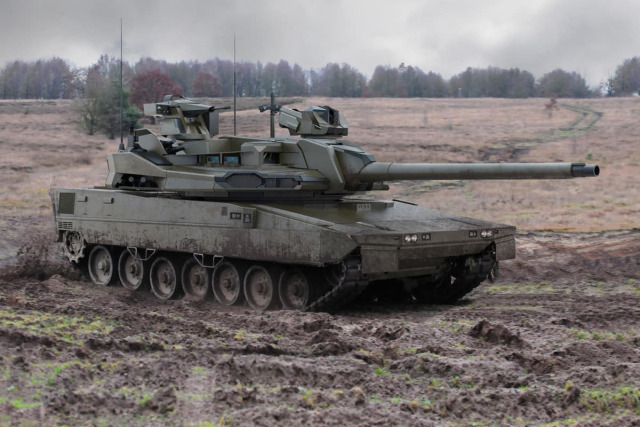
European OBT from KNDSAs for additional weapons, the EOBT was equipped with a 12.7 mm twin large-caliber machine gun (HMG, used for 680 partons), as well as a combined commander's panoramic sight and a remotely controlled weapon station (RWS) with a 7.62 mm machine gun (used for 800 partons).
The tank also has an auxiliary RWS of the type ARX30, designed primarily to provide the machine with organic capabilities to counter unmanned aerial vehicles (UAVs). The LX30 is armed with a 30 mm Nexter 30 M781 revolver cannon with an electric drive, which was previously installed on the European Tiger attack helicopter . The ammunition of the gun includes 150 shells.
The crew of the European main battle tank, in addition to the commander and gunner located in the tower, also includes a driver mechanic and a "system operator". They are located in the hull, and the latter is responsible for controlling the ARX30 RWS, the battle management system (BMS) and, possibly, any UAVs installed on the machine.
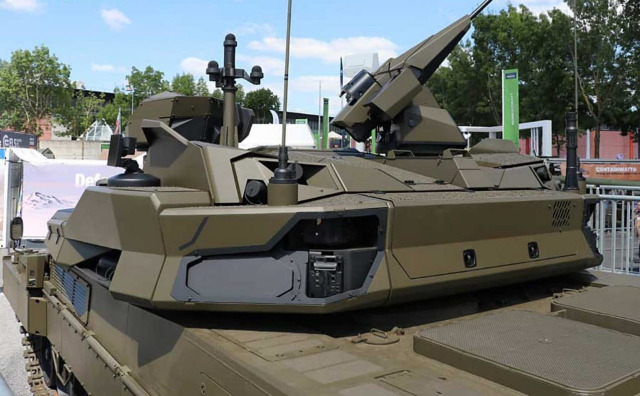
The rear projection of the EOBT tower. Two weapon stations are visibleAccording to experts, the concept of the EOBT crew is interesting because, although the loading mechanism allows you to get rid of the fourth crew member, the armies of many countries have expressed interest in preserving it, given its usefulness in performing various tasks, such as replacing tracks or repairs.
Given that the loader function can be automated, saving the fourth crew member requires finding new tasks for him. Such tasks provided for the "system operator" of the EOBT, apparently, will primarily be aimed at combining protection from small air threats and situational awareness at long distances to improve the overall security of the vehicle and reduce the cognitive load on the commander.
Regarding the protection complex, the exhibition sample was equipped with the Rafael TROPHY Active protection System (APS), the PILAR V acoustic shot detector, the E-LAWS laser warning system (LWR) and 14 GALIX grenade launchers that can be loaded with smoke bombs or other ammunition. Despite the growth in control systems, the EOBT also represents a reversal of the trend of increasing mass observed in modern combat vehicles. The combat weight of the EOBT is 61.5 tons, which is lower than that of many modern main battle tanks.
OBT KF51 "Panther"[/b]
The project of OBT KF51 "Panther" (in addition to the topic ) Rheinmetall also demonstrated a number of interesting features. The vehicle is based on a heavily modified Leopard 2 hull and is equipped with a brand new turret armed with a 130 mm Rheinmetall/L52 smoothbore cannon. It is claimed that the weapon provides superiority over most existing armor options. The gun has a range of elevation angle from -9° to +20°. Combat power is provided by an automatic loader installed in the tower, which is supplied with ammunition from two magazines of 10 shots each, each of which occupies approximately half of the tower magazine. According to Rheinmetall engineers, if necessary, one of the two magazines can be replaced with a compartment with four HERO 12 ammunition to ensure the defeat of targets beyond the line of sight.
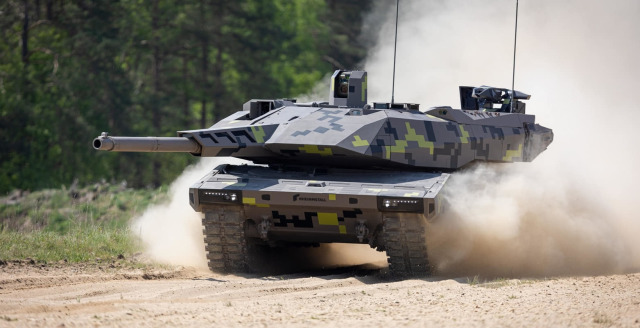
OBT KF51 "Panther" from RheinmetallAs for additional weapons, the tank is equipped with a paired 12.7 mm machine gun with a used 250 rounds.
Rheinmetall Natter RWS is armed with a 7.62 mm machine gun with a used 2500 rounds. The Natter weapon station is designed to protect against small UAVs and light ground targets.
By default, it was assumed that the crew of the Panther would consist of three people, with a driver mechanic in the hull, a commander and a gunner in the turret. However, the graphics provided by Rheinmetall showed that, if required, a fourth crew member, called a "specialist", can additionally be given a seat next to the driver mechanic in the hull. It is assumed that the duties of the "specialist" will include either the management of drones (similar to the "system operator" in the KNDS model), or it will be the company commander.
With regard to protective equipment, the model is equipped with a Rheinmetall ROSY smoke grenade launcher system. In addition, it is possible to install APS, which provides protection against both anti-tank guided missiles (ATGM) and kinetic projectiles (KE), as well as a Top Attack Protection System (TAPS). However, the last two systems were apparently missing from the version presented at Eurosatory. Among other things, the KF51 "Pantra" supposedly took an important step towards reducing the mass of the armored vehicle. The Rheinmetall concern stated that the combat weight of the product is 59 tons.
Other promising developments
Among other European projects of main battle tanks, experts note the work being carried out in the UK. The country is seeking to upgrade its Challenger 2 to the standard developed by RBSL, which includes a number of improvements. In particular, a completely new turret armed with a 120 mm Rheinmetall Rh-120 L55A1/ L55 smoothbore cannon, suitable for firing APFSDS projectiles of types DM73 and KE2020Neo (also designated as DM73Neo). It is also planned to install new gunner and commander sights from Thales on the tank, as well as front and rear thermal imaging sights for the driver.
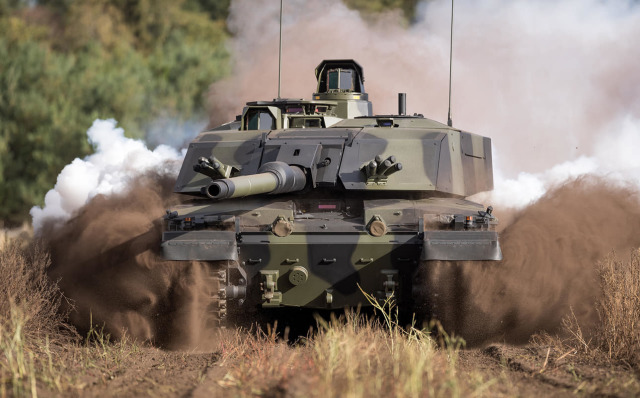
Promising OBT of Great Britain "Challenger 3"Regarding protection, the new turret of the vehicle will receive a new passive armor complex, supplemented with LWR and ten smoke grenade launchers, as well as the Rafael TROPHY active protection system.
These changes were accompanied by a slight increase in weight: the final vehicle, depending on the armor configuration, has a mass of about 66 tons compared to the current 65 tons of Challenger 2.
However, despite the fact that this is a step forward for the UK's tank capabilities, the timing of the update is somewhat inconvenient. The first deliveries of the Challenger 3 to the British Army are scheduled for about 2029. The UK will receive its new vehicles just a few years before the main European allies expect the next generation of tanks under the MGCS program in 2035. As a result, the UK again risks being late with the adoption of new equipment used by its allies.
According to Western sources, Russia has retained its independent potential in the field of tank design, but its budgets and opportunities for large-scale production of new technologies lag behind. The most recent Russian MBT is the T-14 Armata, which is produced by Uralvagonzavod (UVZ) in Nizhny Tagil. For the first time, the tank was demonstrated during the Russian Victory Day Parade on May 9, 2015 and featured a number of interesting design solutions. Perhaps most notable was the location of three crew members, consisting of a commander, a gunner and a driver, inside a protected armored capsule in the front of the hull, as well as the use of an unmanned turret armed with a 125 mm 2A82-1M cannon, which is capable of firing Vacuum-1 and Vacuum-2 shells.
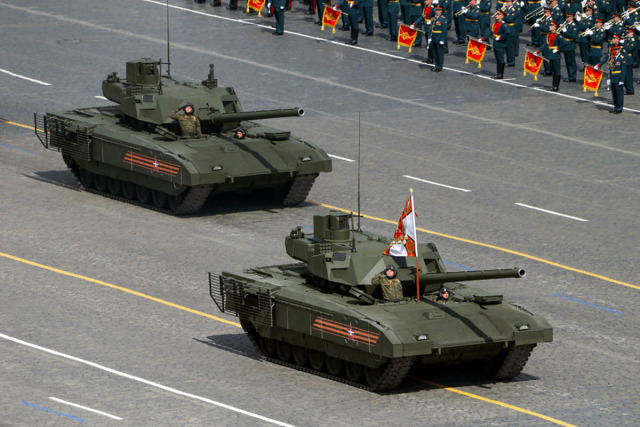
T-14 "Armata" at the Victory Day Parade on May 9, 2015The decision to use an unmanned turret allowed the tank to be significantly lighter than many of its modern designs, and its combat weight is approximately 55 tons.
However, experts say, with the exception of a batch of about 20 tanks released for testing, Russia seems to have not yet been able to launch mass production of the machine. Instead, preference is given to upgraded versions of older designs of main battle tanks, such as the T-72B3, T-80BVM and T-90M. Although all three of them are used in the operation in Ukraine, the T-14 test vehicles have not yet appeared. ( also related )
To be continued…
Based on the materials of the resource euro-sd.com
